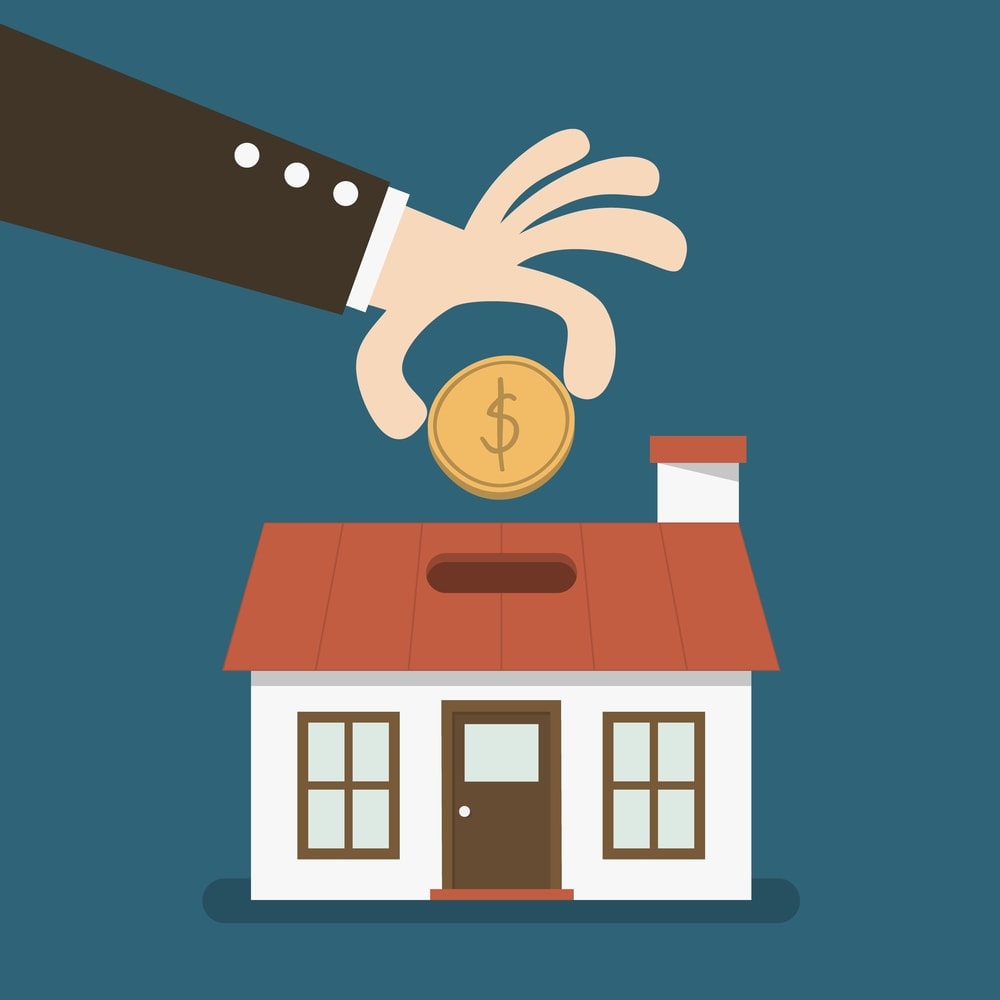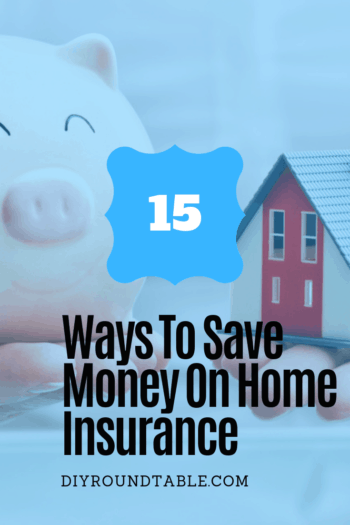This post may contain affiliate links. Please read the disclosure for more info.
Most of us think that our home insurance rates are a necessary evil and we have to pay what we are told. I am here to tell you that you can save hundreds of dollars on your home insurance rates and since we are all trying to save money, we all know that every little bit counts. During my last home purchase, I weighed the pros and cons of several home insurance providers, their costs, and what coverage I was paying for. I have taken that learning and come up with a list of 15 ways to help you save money on your home insurance rates.

Jump To:
Top 15 ways to save money on home insurance:
- Increase your deductible – This can be the easiest way to save money. Increasing your deductible from $500 to $1000 can yield a 25% savings on your rates.
- Get a list of discounts – Speaking to your agent to walk you through the discounts the company can offer can help lower your rates. Some of those discounts can be for upgraded locks, security, and electrical panel.
- Choose a better roof – Most insurance companies will offer between 35% – 45% discounted rates when you opt for better roofing material, however, those costs for materials can outweigh the rate savings so choose wisely.
- Choose better siding – If you live in a region where homes are susceptible to fires and you opt for better siding like cement board, metal, or clapboard you can reduce rates on home insurance by around 20%.
- Shop around – Be sure to revisit insurance company rates regularly so you can determine what has changed in the market and what savings you can take advantage of. However, keep in mind some companies give a discount for customers that have been around for a few years so make sure you consider that in your analysis.
- Think before filing a claim – Insurance companies may increase your rates after you have filed a claim which can result in short-term savings but higher rates later. It may be better to pay for smaller issues that arise and avoid paying the deductible which can range from $500 – $1000 and lead to higher deductibles.
- Replace rubber washing machine hoses – Companies will provide rate savings based on swapping out older rubber washing hoses and replacing them with no-burst stainless steel hoses.
- Improve home security – Insurance providers may provide a 5% – 10% discount when you install a home security system with monitoring. If you install an in-home sprinkler system it can reduce your rates by 20%!
- Improve credit score – Good credit history can help reduce your rates so check your credit on a regular basis and follow step 5 to shop around for the best rates.
- Remove additional coverages you don’t need – Work with your agent to determine what other coverages you are being charged for like a stand-alone shed or garage and if this doesn’t apply to you then be sure to have it removed to help lower your rates.
- Set up automatic payments – Most insurance providers will give a 2% – 3% discount when you enroll in paperless billing and automatic payments.
- Install leak and temperature detectors – Insurance companies can reduce your rates by 5% when you install temperature and leak detection systems that can help detect a broken water heater or pipe saving thousands in the long run.
- Base home insurance rebuilding costs on the house and not the land – The rate you pay should allow your home to be rebuilt in the case of a total loss and you should not consider the land to be at risk. Ensure that the rebuilding costs in your plan only account for the home and the stuff inside of it and not the land value.
- Bundle policies together like home and auto – Most home insurance companies will provide a significant discount – up to 20% when you get both home and auto insurance together.
- Make your home resistant to mother nature – Ensure you are installing proper windows, doors, shutters, and roofing material to help save on rates that provide better resistance to hurricanes, wind storms and whatever else mother natures can throw at you.
What factors raise your home insurance rates?

- Swimming Pool – a swimming pool usually requires increased liability coverage that can add up to $100 to insurance rates. Be sure to have a fence installed
- Hot Tub – due to increased liability like the swimming pool a hot tub can increase home insurance rates. Be sure to have a fence installed.
- Trampoline – due to increased liability a trampoline can increase your home insurance rates from $50 – $100 and other home insurance providers may see for additional coverage from $50,000 or more.
- Dogs – certain breeds like pit bulls or rottweilers are considered aggressive dog breeds and can impact your rates.
- Neglected walkways and steps – you may require additional coverage for sidewalks, walkways and steps which can increase your rates.
- Location – if you live in an area that is a higher risk for natural disasters, like hurricanes, tornadoes, floods and earthquakes. So, the higher the likelihood of a natural disaster the higher your rates. Likewise, if you live near a fully staffed fire department you can see lower rates.
What are the 8 types of home insurance policies?
- HO-1 : A basic homeowners insurance policy that usually covers only ten certain named incidents, such as, fire or smoke, explosion, lightning, hail or wind, vandalism, theft, damage from vehicles or aircraft, riots or volcanic eruption to name a few.
- HO-2 : A broader home policy that covers what is in HO-1 but also damages from falling objects, ice or snow, freezing indoor appliances, indoor plumbing accidents, and a few more but that is all; no other coverage.
- HO-3 : This is the most commonly used policy since it covers a broad range of accidents. It generally covers what is in HO-1 and HO-2 but excludes a certain set of some specifics like earthquakes, landslide or floods.
- HO-4: This as a renters insurance and covers personal property when you are renting a dwelling.
- HO-5: This is much like HO-3 except it covers the specific accidents that HO-3 did not.
- HO-6 : This type of insurance is specific to condo owners and will cover their belongings as well as the walls, floors, and ceilings.
- HO-7 : This type of insurance is specific to mobile or manufactured homes and covers the same as HO-3.
- HO-8 : This type of insurance is specific to older homes and covers the same as HO-3.
Do I have to have homeowners insurance?
No, you do not have to have homeowners insurance if you do not finance your home. If you finance your home, it is almost a guarantee that the lender will require home insurance to ensure the asset is protected and so is their interests.
Is a home inspection required for homeowner’s insurance?
No, a home inspection is not required but some home insurance providers may require one for a policy to be purchased. However, it is a good idea to get a home inspection to help uncover some big problems before you buy. So, pay a few thousand now or possibly pay tens of thousands of dollars later.
In closing:

Be sure to follow the 15 steps for saving money and consider the factors that raise rates. Each of those can help you save a lot of money in the long run. Do not fall into the trap of underinsuring your home to save money. While this is tempting it can lead to significant financial burden in the long run that some homeowners can never recover from. If you have a few hundred dollars to spend up front you can hire a professional appraiser to evaluate your home and ensure you have the right coverage and replacement costs in your policy.

